It is well-known that energy harvesting from wind can be used to power remote monitoring systems. There are several studies that use wind energy in small-scale systems, mainly with wind turbine vertical axis. However, there are very few studies with actual implementations of small wind turbines. This paper compares the performance of horizontal and vertical axis wind turbines for energy harvesting on wireless sensor network applications. The problem with the use of wind energy is that most of the time the wind speed is very low, especially at urban areas. Therefore, this work includes a study on the wind speed distribution in an urban environment and proposes a controller to maximize the energy transfer to the storage systems. The generated power is evaluated by simulation and experimentally for different load and wind conditions. The results demonstrate the increase in efficiency of wind generators that use maximum power transfer tracking, even at low wind speeds.
1.
Introduction
Transport type equations arise ubiquitously in the physical, biological and social sciences (e.g., see [1,2,3]). They were, for example, recently used to approximate the dynamics of opinion formation [3] (see also [4] and [5]), to describe flow on networks (see [6,7,8]) and to model the dynamics of structured populations [9]. Because of the natural setting of the space of measures for these equations, as it allows for unifying discrete and continuous dynamics under the same framework, researchers have recently focused their efforts to study well-posedness of such equations on this space [10,11,12]; hence generalizing previous results that treated these equations in the space of integrable functions (e.g, [1]).
The importance of understanding differentiability of solutions of differential equation models with respect to parameters is crucial for many applications including optimal control (e.g., [13,14]), parameter estimation and least-square problems of fitting models to data [15,16], and sensitivity analysis of solutions to model parameters that can be used to obtain information on parameter uncertainty including confidence intervals for estimated model parameters (e.g., [17,18,19]). Such applications require the minimization of a functional that depends on the model solution and hence (numerically) solving for the critical points of the equation that represents the derivative of the solutions with respect to parameter often becomes necessary.
In this paper, we focus on deriving an equation that represents the derivative of a transport equation with respect to the vector field. To this end, consider the following transport equation in the space of bounded, nonnegative Radon measures $ \mathcal{M}^+(\mathbb{R}^d) $:
where $ \mu_t:[0, T] \to \mathcal{M}^+(\mathbb{R}^d) $ and $ v:\mathbb{R}^d \to \mathbb{R}^d $ is a given vector field. Equation (1.1) is equipped with the initial condition $ \mu_{|t = 0} = \mu_0 $. It is well-known that if $ v \in W^{1, \infty}(\mathbb{R}^d) $, this equation has a unique solution in $ C([0, +\infty), \mathcal{M}^+(\mathbb{R}^d)) $ given by $ \mu_t = T_t^{\#} \mu_0 $ where $ T_t $ is the flow of $ v $ (defined in (2.2)) and $ T_t^{\#} $ denotes the push - forward along the map $ T_t $ (see Eq (2.5)). Here, the space of measures is endowed with the so-called bounded Lipschitz norm $ \| \cdot \|_{BL^*} $ (see Eq (2.1)).
Here, we focus on the regularity of $ \mu_t $ with respect to $ v $, i.e., if $ v $ is slightly perturbed, how will $ \mu_t $ change? To be more precise, suppose $ v(x) $ is replaced with the new vector field $ v_h(x): = v_0(x)+hv_p(x) $ where $ v_0 $ and $ v_p $ are fixed vector fields and $ h $ can vary. The perturbed equation is then
which has the unique solution $ \mu_t^h = (T^h_t)^{\#} \mu_0 $ where $ T^h_t $ is the flow of the vector field $ v_h $. It is easy to see, using the representation formula for solutions to (1.2) presented in [20] or [21] (Eq 1.3) and estimates similar to the ones used to prove Lemma 3.8 in [22], that the map $ h \mapsto \mu^h $ is Lipschitz continuous in $ C([0, T], \mathcal{M}^+(\mathbb{R}^d)) $ so that in particular $ \lim_{h\to 0}\mu^h = \mu $ in $ C([0, T], \mathcal{M}^+(\mathbb{R}^d)) $ for any $ T > 0 $ (see also Eq (2.7)).
The next step in understanding the regularity of $ h \mapsto \mu_t^h $ consists in studying the existence of the derivative $ \partial_h \mu^h $. This type of questions has been recently addressed in [23] for linear transport equation and for general nonlinear structured population models (including transport equation) in [24]. Briefly, denoting by $ \rho^{\Delta h}_{t, h}: = (\mu_t^{h+\Delta h} - \mu_t^h)/\Delta h $, a difference quotient, the question is to give a precise mathematical meaning to the limit $ \lim_{\Delta h \to 0} \rho^{\Delta h}_{t, h} $. It turns out that this type of problems cannot be answered in the framework of bounded Lipschitz norm (see Example 3.5 in [24]). Indeed it is necessary to move to the bigger space $ Z $ defined as the closure of $ \mathcal{M}(\mathbb{R}^d) $ endowed with the dual norm $ (C^{1, \alpha}(\mathbb{R}^d)^* $ (see Section 2.3 for a brief introduction). Then, according to Theorem 1.1 in [23], one can prove that there exists $ \rho_{t, h} \in Z $ such that $ \lim_{\Delta h \to 0} \rho^{\Delta h}_{t, h} = \rho_{t, h} $ (see also Theorem 2.1 below).
In this paper we want to characterize $ \rho $ as the unique solution to some equation. In fact, one of the main results in this work (see, Theorem 4.1 below) states that $ \rho $ is the unique solution to the equation
This equation can then be thought of as the sensitivity equation satisfied by the directional derivative of $ \mu $ under the perturbation $ v_0+hv_p $. We will also prove an analogous result in the non-linear case when the vector-field $ v $ depends on $ \mu $ (see Theorem 5.1 below).
The proofs of these results require the detailed study of a linear transport equation in $ Z $ of the form
While the existence of a solution to (1.3) can be established by extending standard techniques to the current setting on the space Z, the uniqueness issue presents some unexpected difficulties which led to a new notion of solution. With this new concept of solution, we are able to prove in Theorem 3.1 that this equation is well-posed.
The paper is organized as follows. In Section 2 we briefly recall some known facts concerning transport equations in the space of measures and the space $ Z $. We also establish new properties of the space $ Z $. For a smooth flow of the paper we provide the details of long proofs of these new properties in the Appendix. In Section 3, we prove the existence and uniqueness of a solution to linear equation of type (1.3) in $ Z $. This allows to formulate sensitivity equations in the the linear (Section 4) and the nonlinear (Section 5) cases. In Section 6, we discuss possible applications of our results.
2.
Preliminaries
2.1. Transport equation in the space of measures
We briefly review here the formulation of the transport equation
on the space nonnegative Radon measures $ \mathcal{M}^+(\mathbb{R}^d) $. This space is equipped with the bounded Lipschitz norm defined for $ \mu\in \mathcal{M}^+(\mathbb{R}^d) $ as
as the total variation norm is too strong. Here, $ W^{1, \infty}(\mathbb{R}^d) $ is the space of bounded and globally Lipschitz functions.
Let $ v $ be a vector field with $ v \in W^{1, \infty}(\mathbb{R}^d, \mathbb{R}^d) $. Then, the flow of $ v $ denoted by $ T_t v: \mathbb{R}^d \to \mathbb{R}^d $ is defined as the solution to the ODE:
Notice that $ (T_t v)(x) $ is defined for all $ t\in \mathbb{R} $. If there is no risk of confusion, we write $ T_t $ instead of $ T_t v $. Now, the classical method of characteristics allows to solve the transport equation
where $ \nu_{t} \in C([0, T], \mathcal{M}^+(\mathbb{R}^d)) $. More precisely, the unique measure solution in $ C([0, T], \mathcal{M}(\mathbb{R}^d)) $ to (2.3) is given by propagating the initial condition $ \mu_0 $ along the flow of $ v $, namely
where for $ f: \mathbb{R}^d \to \mathbb{R}^d $ and measure $ \mu \in \mathcal{M}^+(\mathbb{R}^d) $, $ f^{\#} \mu $ is the push-forward measure defined as
We remark here that the definition of the push-forward measure yields the following change of variables formula: for all measurable maps $ T:\mathbb{R}^d \to \mathbb{R}^d $ and $ \phi:\mathbb{R}^d \to \mathbb{R} $,
For the proof, see [25] for the case $ \nu = 0 $ and Proposition 3.6 in [21]. Let us also note that formula (2.4) is true also in the setting of bounded Radon measures $ \mathcal{M}(\mathbb{R}^d) $: as the equation is linear, one can apply the Hahn-Jordan decomposition (see Section 4.2 in [26]) and solve the equations for the positive and the negative parts of the measure separately.
Now, let $ v_1 $ and $ v_2 $ be two bounded and globally Lipschitz vector fields. Let $ \mu_t^{(1)} $ and $ \mu_t^{(2)} $ be the solutions to (2.3) with vector fields $ v_1 $ and $ v_2 $, respectively. Then, there is a constant $ C = C(T, \| v_1\|_{W^{1, \infty}}, \| v_2\|_{W^{1, \infty}}, \mu_0) $ such that
For the proof, one simply applies the triangle and Gronwall inequalities as in the proof of Lemma 3.8 in [22]. The solution to (2.3) thus depends continuously on $ v $.
The transport equation (2.3) can also be studied in a nonlinear setting where the vector field depends on the measure solution itself. Then, the nonlinear transport equation takes the form
where $ v:\mathcal{M}^+(\mathbb{R}^d)\to W^{1, \infty}(\mathbb{R}^d, \mathbb{R}^d) $. It is common in application that $ v $ depends on $ \mu $ through some weighted mean of $ \mu $ of the form
for given maps $ V: \mathbb{R}^d \times \mathbb{R} \to \mathbb{R}^d $ and $ K_V: \mathbb{R}^d \times \mathbb{R}^d \to \mathbb{R} $.
2.2. The Hölder space $ C^{1, \alpha}(\mathbb{R}^d) $.
Given $ \alpha \in (0, 1) $, we consider the space $ C^{1, \alpha}(\mathbb{R}^d) $ of bounded continuous functions with bounded and $ \alpha $-Hölder derivative endowed with the norm
Lemma 2.1. 1. For any $ u\in C^{1, \alpha}(\mathbb{R}^d) $,
2. If $ \phi\in C^{1, \alpha}(\mathbb{R}^d) $ and $ T\in C^{1, \alpha}(\mathbb{R}^d, \mathbb{R}^d) $ then $ \phi\circ T\in C^{1, \alpha}(\mathbb{R}^d) $ with norm bounded by a constant depending only on a bound of $ \|\phi\|_{C^{1, \alpha}} $ and $ \|T\|_{C^{1, \alpha}} $.
Proof. The first assertion follows from
For the second one we only need to estimate $ |D(\phi\circ T)(x)-D(\phi\circ T)(y)| $. We have
where $ C = \|\phi\|_{C^{1, \alpha}}\|T\|_{C^{1, \alpha}} + \|\phi\|_{C^{1, \alpha}}\|T\|^{1+\alpha}_{C^{1, \alpha}} $.
We also recall the following result from Cor. 3.16 in [24] regarding the regularity of the flow $ T_tv $ defined in (2.2):
Proposition 2.1. Assume that $ v\in C^{1, \alpha}(\mathbb{R}^d, \mathbb{R}^d) $. Then there exists a constant $ C_T > 0 $ depending only on $ T $ and $ \|v\|_{C^{1, \alpha}} $ such that $ \|D(T_tv)\|_{C^{0, \alpha}}\le C_T $ for any $ t\in [0, T] $. Moreover it can be checked upon inspection of the proof that $ C_T\to 1 $ as $ T\to 0 $.
2.3. The space $ Z $
We consider the space $ Z $ defined as the closure of $ \mathcal{M}(\mathbb{R}^d) $ endowed with the dual norm $ (C^{1, \alpha}(\mathbb{R}^d))^* $ for some $ \alpha $ (see Remark 2.1 on the choice of $ \alpha $). This space was first introduced in [23] where the authors demonstrated that $ Z $ has a lot of convenient topological properties. In particular, $ Z $ is a separable Banach space with its dual being isometrically isomorphic to $ C^{1, \alpha}(\mathbb{R}^d) $. Indeed it was proved in [23][Prop. 5.1] that $ span\{\delta_x, \, x\in\mathbb{Q}^d\} $ is dense in $ Z $. In particular this implies that any element of $ Z $ can be approximated by bounded measures.
Notice that using duality we have for any $ \mu \in Z $,
The main advantage of space $ Z $ is its applicability to studying differentiation problems with respect to perturbation of transport equations. More precisely, let us consider Eq (2.3) with $ \nu_t = 0 $ and vector field $ v_0(x) + h v_p(x) $ where $ h \in [-M, M] $ for some $ M > 0 $, and denote by $ \mu_t^h $ its solution, namely
One is then interested in the limit $ \frac{\mu_t^{h+\Delta h} - \mu_t^h}{\Delta h} $ as $ \Delta h \to 0 $. The following result was obtained in [23]:
Theorem 2.1. Let $ v_0, v_p \in C^{1+\alpha}(\mathbb{R}^d, \mathbb{R}^d) $. Then, $ \frac{\mu_t^{h+\Delta h} - \mu_t^h}{\Delta h} $ converges in $ C([0, T], Z) $ as $ \Delta h \to 0 $.
Remark 2.1. Let $ Z_{\alpha} = \overline{\mathcal{M}(\mathbb{R}^d)}^{(C^{1, \alpha}(\mathbb{R}^d))^*} $. Notice that if $ 0 < \alpha < \alpha' < 1 $ then $ C^{1, \alpha'}\subset C^{1, \alpha} $ from which we deduce that $ Z_{\alpha}\subset Z_{\alpha'} $ with continuous injection. Therefore, if incremental quotient $ \frac{\mu_t^{h+\Delta h}-\mu_t^h}{\Delta h} $ converges in $ Z_\alpha $, it also does so in $ Z_{\alpha'} $ for any $ \alpha' < \alpha $. Moreover, since $ Z_{\alpha}\subset Z_{\alpha'} $ continuously, both limits coincide. So there is no ambiguity and we simply write $ Z $ instead of $ Z_\alpha $.
Such a perturbation problem can be also studied for the nonlinear transport equation (2.8) with a vector-field $ v_0[\mu] $ like (2.9). We perturb $ v_0[\mu] $ considering $ v^h[\mu](x) $ defined as
Then, we have the following result:
Theorem 2.2. Let $ \alpha > \frac{1}{2} $ and $ v^h[\mu] $ be given by (2.11), where $ V_0, V_p \in C^{1+\alpha}(\mathbb{R}^d \times \mathbb{R}, \mathbb{R}^d) $ and $ K_{V_0}, K_{V_p} \in C^{2+\alpha}(\mathbb{R}^d \times \mathbb{R}^d, \mathbb{R}) $. Let $ \mu^h_t $ be the unique solution to (2.8) with the vector field $ v^h[\mu] $. Then, $ \frac{\mu_t^{h+\Delta h} - \mu_t^h}{\Delta h} $ converges in $ C([0, T], Z) $ as $ \Delta h \to 0 $.
Remark 2.2. The proof of existence and uniqueness of solutions as well as of a differentiability result was actually given only for the case of $ \mathbb{R}^+ $ in [22] and [24] respectively. However, the proof can be easily extended to $ \mathbb{R}^d $. Indeed, the main idea is to construct approximating sequence as follows. The interval of time $ [0, T] $ is divided into $ 2^k $ subintervals of the form $ [l \frac{T}{2^k}, (l+1)\frac{T}{2^k}] $ where $ l = 0, 1, ..., 2^{k} -1 $. Then, the following approximation is defined recursively: for $ t \in (l \frac{T}{2^k}, (l+1)\frac{T}{2^k}] $, let $ \mu_t $ be the solution to
with initial condition $ \mu_{l \frac{T}{2^k}} $. One then uses the formula for the solution of the linear problem (2.4) to conclude the proof. See [22] and [24] for more details.
2.4. New facts about the space $ Z $
The following Propositions discuss the distributional derivatives of bounded Radon measures as elements of space $ Z $. For easier flow of this section long proofs are provided in the Appendix.
We can see a Radon measure $ \mu\in \mathcal{M}(\mathbb{R}^d) $ as a distribution by $ (\mu, \phi) = \int \phi\, d\mu $, $ \phi\in C^\infty_c(\mathbb{R}^d) $. We denote by $ \partial_x\phi: = \nabla\phi \cdot x $ the derivative of $ \phi $ in direction $ x\in \mathbb{R}^d $. We then define a distribution $ \partial_x\mu $ by duality letting $ (\partial_x\mu, \phi) = -(\mu, \partial_x\phi) $. The next result shows that in fact $ \partial_x\mu $ belongs to $ Z $ when $ \mu $ is bounded.
Proposition 2.2. For any bounded $ \mu\in \mathcal{M}(\mathbb{R}^d) $, the distributional derivative $ \partial_{x}\mu $ of $ \mu $ in direction $ x \in \mathbb{R}^d $ belongs to $ Z $.
Proof. Let $ \mu\in \mathcal{M}(\mathbb{R}^d) $ be bounded. To prove that the distributional derivative $ \partial_x\mu $ belongs to $ Z $, we need to find a sequence $ \nu_h\in \mathcal{M}(\mathbb{R}^d) $ such that $ \nu_h\to \partial_x\mu $ as $ h\to 0 $ in $ Z $. Let $ \tau_h $ be the translation operator defined by $ \tau_h\phi(y): = \phi(y+h x) $ for any $ \phi $. Take $ \nu_h: = (\tau_h^{\#} \mu-\mu)/h \in \mathcal{M}(\mathbb{R}^d) $. Then for any $ \phi\in C^{1, \alpha}(\mathbb{R}^d) $ with $ \|\phi\|_{C^{1, \alpha}(\mathbb{R}^d)}\le 1 $ we have using (2.10) that
so that $ \nu_h \to - \partial_x\mu $ in $ Z $ as $ h \to 0 $.
Proposition 2.3. Consider $ \mu_n, \mu\in \mathcal{M}_b(\mathbb{R}^d) $ such that $ \mu_n\to \mu $ narrowly (i.e. in duality with bounded and continuous functions $ C_b(\mathbb{R}^d) $). Then $ \partial_x\mu_n\to \partial_x\mu $ in $ Z $.
Proof. See Appendix.
,
Proposition 2.4. For a bounded vector field $ v $ on $ \mathbb{R}^d $ and $ \mu\in \mathcal{M}_b(\mathbb{R}^d) $ we have
Moreover, consider measures $ \mu_n, \mu\in \mathcal{M}_b(\mathbb{R}^d) $ such that $ \mu_n\to\mu $ narrowly and vector fields $ v_n, v \in C_b(\mathbb{R}^d, \mathbb{R}^d) $ such that $ v_n\to v $ uniformly. Then $ \partial_x(v_n\mu_n)\to \partial_x(v\mu) $ in $ Z $.
Proof. For any $ \phi $ such that $ \|\phi\|_{C^{1, \alpha}}\le 1 $ we have
Then, in view of Proposition 2.3, to verify the second assertion, it is sufficient to prove that $ v_n\mu_n\to v\mu $ narrowly. For $ \phi\in C_b(\mathbb{R}^d) $, we have
where $ (\cdot, \cdot) $ denotes the dual pairing. The first term can be bounded by $ \|\mu_n\|_{TV}\|(v_n-v)\phi\|_\infty \le C\|(v_n-v)\|_\infty\to 0 $ while the second tends to 0 since $ v\phi\in C_b(\mathbb{R}^d) $.
We deduce that
Corollary 2.1. Let $ [0, T] \ni t \mapsto \mu_t\in \mathcal{M}_b(\mathbb{R}^d) $ be a narrowly continuous map and $ v \in C_b(\mathbb{R}^d, \mathbb{R}^d) $. Then $ \partial_x(v\mu_t) \in C([0, T], Z) $.
It will also be useful to define the push-forward of an element of $ Z $. The idea is quite simple. In fact, since this is well-defined on the space of measures, we can extend its definition for elements of $ Z $ by means of Cauchy sequences.
Proposition 2.5. Let $ T\in C^{1, \alpha}(\mathbb{R}^d, \mathbb{R}^d) $. Then for any $ \mu\in Z $ we can define $ T^{\#} \mu\in Z $ by
where $ \{\mu_n\}_{n \in \mathbb{N}} \subset \mathcal{M}(\mathbb{R}^d) $ is any sequence such that $ \mu_n\to\mu $ in $ Z $. Then, for any $ \phi\in C^{1, \alpha}(\mathbb{R}^d) $ we have the following analogue of the change of variables formula (2.6):
where $ \phi\circ T $ denotes composition of the maps $ \phi $ and $ T $.
Proof. See Appendix.
We conclude this section with the following classical observation. By definition, if $ \mu \in Z $, there is a sequence of bounded measures $ \{\mu_n \}_{n \in \mathbb{N}} $ such that $ \mu_n \to \mu $ in $ Z $. Now, if $ \mu \in C([0, T], Z) $, for each $ t \in [0, T] $, one can choose an approximating sequence for each $ \mu_t $, $ t\in [0, T] $. However, it is possible to construct an approximating sequence that is continuous in time and so, that approximates the whole curve $ t \mapsto \mu_t $, $ t \in [0, T] $. This is the content of the following lemma.
Lemma 2.2. Let $ \mu \in C([0, T], Z) $. There is a sequence $ \{\mu^{(n)}\}_{n \in \mathbb{N}} \subset C([0, T], \mathcal{M}_b(\mathbb{R}^d)) $ such that $ \mu^{(n)} \to \mu $ in $ C([0, T], Z) $ as $ n\to \infty $.
Proof. See Appendix.
Corollary 2.2. Let $ \nu\in C([0, T], Z) $ and $ v\in C^{1, \alpha}(\mathbb{R}^d) $. Then the map $ t\to T_tv^{\#} \nu_t $ is continuous from $ [0, T] $ to $ Z $.
Proof. See Appendix.
3.
Transport equation in $ Z $
In this section, we study the following transport equation in the space $ Z $:
where $ v\in C^{1, \alpha}(\mathbb{R}^d, \mathbb{R}^d) $, $ \nu\in C([0, T], Z) $ and $ \mu_0\in Z $. We begin with a concept of a very weak solution.
Definition 3.1. We say that $ \mu \in C([0, T], Z) $ is a very weak solution to (3.1) in $ Z $ if for any $ \varphi \in C([0, T] \times \mathbb{R}^d) $ with $ \varphi \in C([0, T], C^{2+\alpha}(\mathbb{R}^d)) $ and $ \varphi_t \in C([0, T], C^{1+\alpha}(\mathbb{R}^d)) $ we have:
Note that we have to use test functions of regularity at least $ C^{2+\alpha} $ in space variable $ x $ so that function $ \varphi_t + v(x) \cdot \nabla_x \varphi $ lies in $ Z $, the domain of the functional $ \mu_t $.
Proposition 3.1. Equation (3.1) has at least one very weak solution in $ C([0, T], Z) $ given by
where the integral is a Bochner integral in $ Z $.
Moreover, if $ \mu_0 = 0 $ and $ \nu_t = 0 $, then for any weak solution $ \mu_t $ we have
for all $ \eta \in C^{2+\alpha}(\mathbb{R}^d) $ and $ t\in [0, T] $.
Proof. We first verify that the integral appearing on the right-hand side of (3.3) is a Bochner integral in $ Z $. According to Corollary 2 the map $ f:s\in [0, t]\to T_{t-s}^{\#}\nu_s\in Z $ is continuous. Thus for any $ z^*\in Z^* $, $ z^*\circ f $ is also continuous. Since $ Z $ is separable, we conclude using Pettis theorem that $ f $ is measurable. Moreover for any $ \phi\in C^{1, \alpha}(\mathbb{R}^d) $, $ \|\phi\|_{C^{1, \alpha}}\le 1 $, we have
since $ \nu\in C([0, T], Z) $ and in view of Lemma 2.1 and Proposition 1. It follows that $ \max_{0\le s\le t}\|f(s)\|_Z\le C_T $ and thus that $ f $ is Bochner-integrable. It is also easily seen that $ \int_0^t T_{t-s}^{\#}\nu_s\, ds $ is continuous in $ t $.
Let $ \mu_t $ be defined by (3.3). Clearly $ \mu\in C([0, T], Z) $. We now verify that $ \mu_t $ is a solution in the sense of Definition 1. According to Lemma 2, we we can find sequences $ \{\nu^{(n)} \}_{n \in \mathbb{N}} \subset C([0, T], \mathcal{M}_b(\mathbb{R}^d)) $ and $ \{\mu_0^n \}_{n \in \mathbb{N}} \subset \mathcal{M}_b(\mathbb{R}^d) $ such that $ \|\mu_0^{(n)} - \mu_0\|_Z\to 0 $ and $ \|\nu_t^{(n)}- \nu_t\|_Z\to 0 $ uniformly in $ t\in [0, T] $. Then the transport equation
has a unique solution $ \mu^{(n)}\in C([0, T], \mathcal{M}_b(\mathbb{R}^d)) $ given by
According to Proposition 2.5, $ T_t^{\#} \mu_0^{(n)}\to T_t^{\#} \mu_0 $ in $ Z $ and, for any $ s $, $ T_{t-s}^{\#}\nu_s^{(n)}\to T_{t-s}^{\#}\nu_s $ in $ Z $. Since $ \|T_{t-s}^{\#}\nu_s^{(n)}\|_Z\le C_T $ we have applying the Dominated Convergence Theorem that $ \int_0^t T_{t-s}^{\#}\nu_s^{(n)}\, ds\to \int_0^t T_{t-s}^{\#}\nu_s\, ds $ in $ Z $. Thus for any $ t\in [0, T] $, $ \mu_t^{(n)} $ converges in $ Z $ to $ \mu_t $ given by
Clearly, $ \mu\in C([0, T], Z) $. On the other hand, weak formulation for (3.5) is valid for test functions of class $ C^1([0, T]\times \mathbb{R}^d) \cap W^{1, \infty}([0, T]\times \mathbb{R}^d) $. In particular, taking test functions as in Definition 3.1, we send $ n \to \infty $ in the weak formulation for (3.5) to deduce that $ \mu_t $ is a very weak solution to (3.1).
To prove (3.4), we use the so-called dual problem (cf. Remark 8.1.5 and Proposition 8.1.7 in [27] or Proposition 5.34 in [25]). More precisely, given some function $ \psi(x, t) $, let $ \varphi $ be the solution of
which is explicitly given by $ \varphi(x, t) = -\int_t^T \psi(T_{s-t}(x), s) ds $. We consider $ \phi $ of the form $ \psi(x, t) = \xi(t) \eta(x) $ where $ \xi \in C^{\infty}_c([0, T]) $ and $ \eta \in C^{2, \alpha}(\mathbb{R}^d) $. We then use the corresponding solution $ \phi $ of (3.7) as a test function in (3.2) to conclude
Since the map $ t \mapsto (\mu_t, \eta(x)) $ is continuous for $ t \in [0, T] $ and since $ \xi $ is arbitrary, we deduce that $ (\mu_t, \eta) = 0 $ for any $ \eta \in C^{2, \alpha}(\mathbb{R}^d) $ and $ t \in [0, T] $.
Unfortunately, condition (3.4) does not imply that $ \mu_t = 0 $ so that we cannot deduce the uniqueness of a solution to (3.1). The problem here is that $ C^{2+\alpha}(\mathbb{R}^d) $ is not dense in $ C^{1+\alpha}(\mathbb{R}^d) $. The following two examples shows the typical problem with approximation of Hölder functions.
Example 3.1. One can easily check that $ f(x) = \sqrt{x} \in C^{1/2}([0, 1]) $. Suppose there is a sequence $ \{ f_n \}_{n\in \mathbb{N}} \subset C^1([0, 1]) $ such that $ \| f_n - f \|_{C^{1/2}} \to 0 $. Then
contradicting $ \{ f_n \}_{n\in \mathbb{N}} \subset C^1([0, 1]) $.
Example 3.2. We construct a nontrivial functional on $ C^{1/2}([0, 1]) $ which vanishes on $ C^{1, 1/2}([0, 1]) $. In particular, this shows that functionals on $ C^{1/2}([0, 1]) $ cannot be uniquely characterized by their values on $ C^{1, 1/2}([0, 1]) $. Let $ X = C^1([0, 1]) \oplus {lin}(\sqrt{x}) $ be a linear subspace of $ C^{1/2}([0, 1]) $. On $ X $, we can define a functional $ \varphi: X \to \mathbb{R} $ with
Notice that $ \phi $ is continuous since $ |\varphi(f)| \leq \|f\|_{C^{1/2}} $. By the analytic version of Hahn-Banach Theorem (Theorem 1.1 in [28]), we can then extend $ \varphi $ to a continuous functional on $ C^{1/2}([0, 1]) $. It is easily seen that $ \phi(f) = 0 $ for any $ f\in C^{1}([0, 1]) $ by Taylor's estimate but that $ \varphi(\sqrt{x}) = 1 $.
There is also characterization of subset in $ C^{\alpha} $ consisting of functions that can be approximated by smooth functions:
Remark 3.1. Let $ \Omega \subset \mathbb{R}^d $. Then, $ f \in C^{\alpha}(\Omega) $ can be approximated by smooth functions if and only if $ f $ is an element of the set
One easily checks that for $ \Omega = [0, 1] $, $ \sqrt{x} \notin \mathcal{F}^{1/2}(\Omega) $. Moreover, for any $ \beta > \alpha $, $ C^{\beta}(\Omega) \subset \mathcal{F}^{\alpha}(\Omega) $.
Therefore, we realize that the space of test functions is too small to deduce uniqueness of weak solutions. This is the case for many PDEs formulated in the weak sense. Probably one of the most famous is Euler's equation where one can construct infinitely many distributional solutions with prescribed energy profile (thus contradicting conservation of energy), see [29] and references therein. The standard procedure in such situation for many evolutionary problems is to require some additional conditions to be satisfied by a weak solution (like entropy condition for conservation laws, see [30], section 3.4).
To establish additional conditions required from weak solutions, we should get some insight about which solutions we would like to extract. First, note that if $ \nu \in Z $, there is an approximating sequence of measures $ \nu_n \in \mathcal{M}(\mathbb{R}^d) $ such that $ \nu_n \to \nu $ in $ Z $. Now, recall that we want to find an equation that is satisfied by the derivative of the solution to (3.1) with respect to perturbation parameter $ h $. Therefore, in our case, such approximating sequence is of the form $ \frac{\mu_t^{h+\Delta h} - \mu_t^h}{\Delta h} $. We will see in the proof of Theorem 4.1 below that $ \|\frac{\mu_t^{h+\Delta h} - \mu_t^h}{\Delta h} \|_{BL^*} \leq C_T $ for some constant $ C $ independent of $ h $, $ \Delta h $ and $ t $. This suggests to define the following admissibility class:
Notice that $ \mathcal{A} $ is a subspace of $ Z $ containing the bounded measures $ \mathcal{M}_b(\mathbb{R}^d) $ so that $ \mathcal{A} $ is dense in $ Z $. In view of the proof of Proposition 2.2 we also have that $ \partial_x\mu\in \mathcal{A} $ for any $ \mu\in \mathcal{M}_b(\mathbb{R}^d) $. In fact we have the folowing stronger result:
Proposition 3.2. Let $ \mu:[0, T]\to \mathcal{M}_b(\mathbb{R}^d) $ be continuous and TV-bounded, and let $ x\in \mathbb{R}^d $. Then $ \partial_x\mu\in C([0, T], Z) $ with values in $ \mathcal{A} $ and in fact there exists $ \rho^h\in C([0, T], \mathcal{M}_b(\mathbb{R}^d)) $, $ h\in (0, 1) $, such that
Proof. According to Proposition 2.3, $ \partial_x\mu\in C([0, T], Z) $. Let $ \tau_h $ be the translation defined by $ \tau_h\phi(y) = \phi(y+hx) $. It is then easy to verify using the same arguments as in the proof of Proposition 2 that $ \rho_t^h: = (\tau_h^{\#} \mu_t - \mu_t)/h $ satisfies the requirements.
We can now define a weak solutions as follows.
Definition 3.2. We say that $ \mu \in C([0, T], Z) $ is a weak solution to (3.1) in $ Z $ if $ \mu $ is a very weak solution (see Definition 3.1) and for all $ t\in [0, T] $, $ \mu_t \in A $.
With this definition we are now able to establish the following existence and uniqueness result:
Theorem 3.1. Let $ \mu_0 \in \mathcal{A} $ and $ \nu \in C([0, T], Z) $ with values in $ \mathcal{A} $. Assume that there exists a sequence $ \nu^n\in C([0, T], \mathcal{M}_b(\mathbb{R}^d)) $, $ n\in\mathbb{N} $, such that
Then, equation (3.1) has a unique weak solution in the sense of Definition 3.2 which is given by
Note that according to Proposition 3.2, the Theorem applies in particular when $ \nu_t = \partial_x(\mu_t) $ with $ \mu:[0, T]\to \mathcal{M}_b(\mathbb{R}^d) $ continuous and TV-bounded.
Proof. To prove the uniqueness statement, since the equation is linear, it is sufficient to prove that if $ \mu_0 = 0 $ and $ \nu_t = 0 $ for all $ t \in [0, T] $, then $ \mu_t = 0 $ for all $ t\in [0, T] $. This is equivalent to $ (\mu_t, \eta) = 0 $ for any $ \eta \in C^{1, \alpha}(\mathbb{R}^d) $. Fix $ \eta \in C^{1, \alpha}(\mathbb{R}^d) $ and for $ \epsilon > 0 $ denote by $ \eta^{\epsilon} $ the standard mollification of $ \eta $. Since $ \eta $ and its derivatives are uniformly continuous, we have $ \|\eta^{\epsilon} - \eta\|_{W^{1, \infty}} \to 0 $ as $ \epsilon \to 0 $. Moreover, for fixed $ \epsilon > 0 $, $ \eta^\epsilon \in C^{2, \alpha}(\mathbb{R}^d) $ so that $ (\mu_t, \eta^{\epsilon}) = 0 $ by (3.4). Since $ \mu_t \in \mathcal{A} $ there exists a BL-bounded sequence $ \mu_t^{(n)}\in \mathcal{M}_b(\mathbb{R}^d) $ converging in $ Z $ to $ \mu_t $. For a fixed $ \varepsilon > 0 $ we then write
with
for some constant $ C $ independent of $ n $. Thus
Since $ \epsilon > 0 $ is arbitrary, we conclude $ (\mu_t, \eta) = 0 $.
Concerning the existence, we already know from Proposition 3.1 that $ \mu_t = T_t^{\#} \mu_0 + \int_0^t T_{t-s}^{\#}\nu_s\, ds $ belongs to $ C([0, T], Z) $ and solves the equation. It remains to prove that $ \mu_t\in \mathcal{A} $ for any $ t\in [0, T] $. Since $ \mu_0\in \mathcal{A} $ there exists a BL-bounded sequence $ \mu_0^{(n)}\in \mathcal{M}_b(\mathbb{R}^d) $ converging in $ Z $ to $ \mu_0 $. Let
where $ \nu_n $ satisfies (3.9). We verify as in the proof of Proposition 3.1 that $ \mu_t^{(n)}\to \mu_t $ in $ Z $ for any given $ t $. Moreover for any bounded Lipschitz $ \phi $ we have
Since $ Lip(T_t)\le e^{t \, Lip(v)} $ we have $ \|\phi\circ T_t\|_{BL}\le e^{t \, Lip(v)} $. Thus, choosing $ C_T = e^{t \, Lip(v)}\Big(\sup_n \|\mu_0^{(n)}\|_{BL^*} + T\, \sup_{n, 0\le s\le T}\|\nu_s^{(n)}\|_{BL^*} \Big) $ we see that
Hence, $ \sup_{n\in\mathbb{N}, \, t\in [0, T]}\|\mu_t^n\|_{BL^*} \le C_T $.
4.
Sensitivity equation for a linear transport equation
In this section we formulate an equation that is satisfied by the derivative of the solutions $ \mu_t $ with respect to $ h $, i.e., $ \rho_{t, h} = \lim_{\Delta h \to 0} \frac{\mu^{h+\Delta h}_t - \mu^h_t}{\Delta h} $, where $ \mu^h_t $ solves
with initial condition $ \mu^h_{|t = 0} = \mu_0 $ and $ v^h = v_0 + hv_p $ where $ v_0, v_p \in C^{1+\alpha}(\mathbb{R}^d, \mathbb{R}^d) $ are given vector fields. The derivative $ \rho_{t, h} $ exists according to Theorem 2.1.
To obtain the equation $ \rho_{t, h} $ should solve, we substract the equations satisfied by $ \mu_t^h $ and $ \mu_t^{h+\Delta h} $, namely
to obtain that $ \rho_{t, h}^{\Delta h} : = \frac{\mu^{h+\Delta h}_t - \mu^h_t}{\Delta h} $ satisfies
Thus, intuitively the limit $ \rho_{t, h} = \lim_{\Delta h \to 0}\, \rho_{t, h}^{\Delta h} $ should satisfy
Since the right-hand side belongs to $ Z $ in view of Proposition 2.4, we are naturally led to study this equation in $ Z $. The following Theorem asserts that this intuition is correct and can be rigurously justifed.
Theorem 4.1. The derivative $ \rho_{t, h} = \lim_{\Delta h \to 0} \frac{\mu_t^{h+\Delta h} - \mu_t^h}{\Delta h} $ where $ \mu_t^h $ and $ \mu_t^{h+\Delta h} $ solve (4.1) is the unique weak solution (cf. Definition 3.2) of
with initial condition $ \rho_{0, h} = 0 $.
Proof. Let $ \rho^{\Delta h}_{t, h}: = (\mu_t^{h+\Delta h}-\mu_t^h)/{\Delta h} $. Since $ \mu_t^{h+\Delta h} $ and $ \mu_t^h $ are solutions to (4.1), we have that for any $ \varphi \in C^1([0, T]\times \mathbb{R}^d) \cap W^{1, \infty}([0, T]\times \mathbb{R}^d) $:
and similarly
Substracting these equations and dividing by $ \Delta h $, we obtain that
Since $ \mu^{h+\Delta h}\to \mu^h $ in $ C([0, T], \mathcal{M}(\mathbb{R}^d)) $ as $ \Delta h\to 0 $, We can pass to the limit $ \Delta h\to 0 $ in the last term on the right-hand side using the Dominated Convergence Theorem to obtain
Recall that we know from Theorem 2.1 that the limit $ \rho_h = \lim_{h\to 0} \rho_{h}^{\Delta h} $ exists in $ C([0, T], Z) $ - in particular $ \|\rho_{t, h}^{\Delta h}\|_Z\le C_T $ for any $ t\in [0, T] $ and any $ \Delta h $ small. Now, if $ \varphi $ satisfies $ \varphi \in C([0, T], C^{2+\alpha}(\mathbb{R}^d)) $ and $ \partial_t\varphi \in C([0, T], C^{1+\alpha}(\mathbb{R}^d)) $, using that $ v_0, v_p \in C^{1+\alpha}(\mathbb{R}^d, \mathbb{R}^d) $, we deduce that as $ \Delta h\to 0 $,
Moreover for any $ s\in [0, T] $ and $ \Delta h $ small,
Using the Dominated Convergence Theorem, we can thus send $ \Delta h \to 0 $ in (4.4) to deduce:
Thus, $ \rho_{t, h} $ is a very weak solution of (4.3) with initial condition $ \rho_{0, h} = 0 $.
Let us prove that $ \rho_{t, h} $ is the unique weak solution to (4.3). First note that due to Corollary 2.1, $ \partial_x(v_p(x)\mu^h_t) \in C([0, T], Z) $. Moreover, we claim that $ \rho_{t, h} \in \mathcal{A} $ for all $ t\in [0, T] $, where $ \mathcal{A} $ is the admissibility class defined in (3.8). Indeed since $ \rho_{t, h}^{\Delta h}\to \rho_{t, h} $ in $ Z $, it suffices to verify that $ \|\rho_{t, h}^{\Delta h}\|_{BL^*}\le C $ with $ C $ independent of $ \Delta h $. Recall that $ \mu_t^h = (T_t^h)^{\#} \mu_0 $ where $ T^h_t $ is the flow of $ v^h $. Using Gronwall inequality it is easy to see that
Thus for any $ \phi\in W^{1, \infty}(\mathbb{R}^d) $, $ \|\phi\|_{W^{1, \infty}}\le 1 $,
Taking the supremum over such $ \phi $, we deduce that $ \|\mu_t^h-\mu_t^{h+\Delta h}\|_{BL^*}\le C_{T, h}\Delta h $. Therefore, in view of Theorem 3.1, we conclude that $ \rho_{t, h} $ is the unique weak solution to (4.3).
Notice that in the previous proof we exploited the fact that we already knew that the derivative $ \rho_h = \lim_{h\to 0} \rho_{h}^{\Delta h} $ exists due to [23]. But the well-posedness theory we established in the previous section and the fact $ \rho_t^h $ is characterized as the unique solution to equation (4.3) allow us to give an alternative short proof of the existence of $ \rho_h $. Indeed let us define $ \rho_{t, h} $ as the unique solution to (4.3). We then need to prove that
In view of (4.4), $ \rho_{t, h}^{\Delta h} $ satisfies
Since $ \rho_{t, h}, \rho_{t, h}^{\Delta h}\in \mathcal{A} $, Theorem 3.1 yields
where $ T_t^h $ is the flow of $ v^h $. Then
where we used in the last equality that $ \|\phi\circ T_t^h\|_{C^{1+\alpha}}\le C_{T, h} $ for any $ \|\phi\|_{C^{1+\alpha}}\le 1 $. We deduce (4.6) using Lemma 4.1 below.
Lemma 4.1. There holds
Proof. The proof follows the line of the proof of Proposition 2.3. Suppose that (4.7) is not true so that there exist $ \varepsilon > 0 $ and sequences $ \{t_{\Delta h} \}\subset [0, T] $, $ \{\phi_{\Delta h}\}\subset C^{1+\alpha}(\mathbb{R}^d) $, $ \|\phi_{\Delta h}\|_{C^{1+\alpha}}\le 1 $ such that
As in the proof of Proposition 2.3 there exists $ \phi\in C^{1+\alpha}(\mathbb{R}^d) $, $ \|\phi\|_{C^{1+\alpha}}\le 1 $, such that up to a subsequence $ \phi_{\Delta h}\to \phi $ in $ C^1_{loc}(\mathbb{R}^d) $. Moreover there exists $ t_0 = \lim_{\Delta h\to 0}t_{\Delta h} $ up to a subsequence. Independently recall that $ \mu_t^h = (T_t^h)^{\#}\mu_0 $ and $ \mu_t^{h+\Delta h} = (T_t^{h+\Delta h})^{\#}\mu_0 $. It follows that $ \|\mu_t^h\|_{TV}, \|\mu_t^{h+\Delta h}\|_{TV}\le \|\mu_0\|_{TV} $ and also that for any $ \delta > 0 $ there exists a compact set $ K\subset \mathbb{R}^d $ such that
Since $ v_p \nabla \phi_{\Delta h}\to v_p \nabla \phi $ in $ C_{loc}(\mathbb{R}^d) $ it follows that
Eventually letting $ \psi: = v_p \nabla \phi $ we have
Since $ \psi $ is bounded and $ T_{t_{\Delta h}}^{h+\Delta h}(x))\to T_{t_0}^h(x) $, $ T_{t_{\Delta h}}^h(x)\to T_{t_0}^h(x) $ for any $ x\in \mathbb{R}^d $, the Dominated Convergence Theorem gives $ (\mu_t^{h+\Delta h}-\mu_t^h, v_p \nabla \phi)\to 0 $. This and (4.9) contradicts (4.8).
5.
Sensitivity equation for a nonlinear transport equation
In this Section we formulate an equation satisfied by the derivative
where $ \mu^h_t $ solves
with the initial condition $ \mu^h_{|t = 0} = \mu_0 $ and $ v^h[\mu_t^h] $ is a vector field which depends a priori in a non-linear way of $ \mu_t^h $.
Let us first present some heuristic computations to determine the equation $ \rho_{t, h} $ should satisfy. Let $ \rho^{\Delta h}_{t, h}: = (\mu_t^{h+\Delta h}-\mu_t^h)/{\Delta h} $. Since $ \mu_t^{h+\Delta h} $ and $ \mu_t^h $ are solutions to (5.1) we have that for any $ \varphi \in C^1([0, T]\times \mathbb{R}^d) \cap W^{1, \infty}([0, T]\times \mathbb{R}^d) $:
and similarly
Notice that $ \mu^{h+\Delta h}_s = \mu^{h}_s + \Delta h \rho^{\Delta h}_{t, h} $. Then performing formally a first order Taylor expansion,
Substracting (5.9) from (5.10) and dividing by $ \Delta h $, we then obtain
Thus $ \rho^{\Delta h}_{t, h} $ solves the linear equation
with initial condition $ \rho^{\Delta h}_{t = 0, h} = 0 $. We thus expect the limit $ \rho_{t, h} $ to solve
Comparing with the linear caser studied in the previous section where we obtained the sensitivity equation (4.3), the situation now is more complicated because even if (5.6) is linear in $ \rho_{t, h} $, the right-hand side depends on $ \rho_{t, h} $ and the existence and uniqueness theory developed so far does not apply directly.
It turns out however that the previous formal reasonning (in particular the formal Taylor expansion (5.4)) can be justified when $ v^h[\mu] $ is of the form (2.11), namely
with $ V_0, V_p \in C^{1+\alpha}(\mathbb{R}^d \times \mathbb{R}, \mathbb{R}^d) $ and $ K_{V_0}, K_{V_p} \in C^{2+\alpha}(\mathbb{R}^d \times \mathbb{R}^d, \mathbb{R}) $ for some $ \alpha > \frac{1}{2} $. In that case the derivative $ \rho_{t, h} $ exists according to Theorem 2.2 and we have the following result from [24] (Lemma 4.6):
Lemma 5.1. Let $ V, K_V \in C^{1+\alpha}(\mathbb{R}^d \times \mathbb{R}^d) $ and the map $ h \mapsto \mu_t^h $ be differentiable in $ Z $. Then, for every $ x \in \mathbb{R}^d $, the map $ h \mapsto V \left(x, \int_{\mathbb{R}^d} K_V(x, y) d \mu_t^h\right) $ is $ C^{1+\alpha}(\mathbb{R}, \mathbb{R}^d) $ with norms bounded by some constant depending on the $ C^{1+\alpha} $ norms of $ V $ and $ K_V $ as well as $ Z $ norm of derivative of $ \mu_t^h $. Moreover, if $ \rho_{t, h} = \lim_{\Delta h \to 0} \frac{\mu_t^{h+\Delta h} - \mu_t^h}{\Delta h} $, we have the following chain rule:
where $ \nabla_y V $ denotes the gradient of $ V $ with respect to the second variable.
Then Lemma 5.1 and Lemma 2.1 gives the following rigorous Taylor expansion:
Corollary 5.1. In the framework of Lemma 5.1,
where
and the $ O(|h|^{1+\alpha}) $ is uniform in $ x\in \mathbb{R}^d $.
The following theorem asserts that the sensitivity equation (5.6) we obtained formally is the correct one:
Theorem 5.1. The derivative $ \rho_{t, h} = \lim_{\Delta h \to 0} \frac{\mu_t^{h+\Delta h} - \mu_t^h}{\Delta h} $ where $ \mu_t^h $ and $ \mu_t^{h+\Delta h} $ solve (5.1) is the unique weak solution of
with initial condition $ \rho_{0, h} = 0 $. More precisely, the weak formulation is satisfied for all test functions $ \varphi(x, t) $ of regularity $ \varphi \in C([0, T], C^{2+\alpha}(\mathbb{R}^d)) $, $ \varphi_t \in C([0, T], C^{1+\alpha}(\mathbb{R}^d)) $, and $ \rho_{t, h} \in \mathcal{A} $ for all $ t\in [0, T] $ where $ \mathcal{A} $ is defined in (3.8).
Proof. Let $ \rho^{\Delta h}_{t, h}: = (\mu_t^{h+\Delta h}-\mu_t^h)/{\Delta h} $. Since $ \mu_t^{h+\Delta h} $ and $ \mu_t^h $ are solutions to (5.1) we have that for any $ \varphi \in C^1([0, T]\times \mathbb{R}^d) \cap W^{1, \infty}([0, T]\times \mathbb{R}^d) $:
and similarly
The plan is to substract these equations, divide by $ \Delta h $ and pass to the limit $ \Delta h \to 0 $. First, in view of (5.7),
Therefore, for $ \varphi(x, t) $ of regularity $ \varphi \in C([0, T], C^{2+\alpha}(\mathbb{R}^d)) $ and $ \varphi_t \in C([0, T], C^{1+\alpha}(\mathbb{R}^d)) $, we substract (5.9) from (5.10), divide by $ \Delta h $ and send $ \Delta h \to 0 $. Recalling that $ \rho_{t, h}^{\Delta h}\to \rho_{t, h} $ in $ Z $ uniformly in $ t\in [0, T] $, we obtain
Thus, $ \rho_{t, h} $ is a weak solution of (5.8). It is also in the admissible class $ \mathcal{A} $ due to the Lipschitz continuity of solutions with respect to the vector field.
To obtain uniqueness, suppose that $ \rho^{(1)}_{t, h} $ and $ \rho^{(2)}_{t, h} $ are solutions to (5.8) with values in $ \mathcal{A} $. Then, their difference $ \rho_{t, h} = \rho^{(1)}_{t, h} - \rho^{(2)}_{t, h}\in \mathcal{A} $ satisfies
Fix $ \psi \in C^{2+\alpha}(\mathbb{R}^d) $. As in the proof of Proposition 3.1, we again use the duality method to find a test function $ \varphi_{\psi}(x, t) $ such that
Actually, it can be given explicitly as $ \varphi_{\psi}(x, s) = \psi(T(x, t, s)) $ where $ T $ is the flow of the non-autonomous vector field $ v^h[\mu^h_s] $ which solves the ODE:
see Remark 8.1.5 and Proposition 8.1.7 in [27]. Using the test-function $ \phi_v $ in (5.11) we deduce
for any $ \psi \in C^{2+\alpha}(\mathbb{R}^d) $. Since the kernels $ K_{V_0} $ and $ K_{V_p} $ are both assumed to be $ C^{2+\alpha}(\mathbb{R}^d \times \mathbb{R}^d) $, there is a constant $ C $ such that
Moreover, for $ \psi \in C^{2+\alpha}(\mathbb{R}^d) $ with $ \| \psi \|_{C^{2+\alpha}} \leq 1 $ we see from the explicit formula that there is another constant $ C $ such that $ \|\nabla\varphi_{\psi} \|_{\infty} \leq C $. Therefore, from (5.12), we conclude
for some possibly bigger constant $ C $. Now, Gronwall inequality implies
for all $ s \in [0, t] $ and all $ \psi \in C^{2+\alpha}(\mathbb{R}^d) $. As $ \rho_{s, h} $ is in the admissible class $ \mathcal{A} $, we can repeat the uniqueness proof from Theorem 3.1 to deduce that $ \rho_{s, h} = 0 $ as desired.
6.
Applications
As mentioned above, transport-type equations like (1.1) represent a big variety of phenomena occurring in physics, biology and social sciences. In this section we present applications that the theory developed here is of use.
6.1. Optimal control
Here we are interested in functionals of the form
where $ \mu_t^h $ is a measure solution to the perturbed transport equation (1.2) on the space of nonnegative Radon measure, while $ F \in C^{1+\alpha}(\mathbb{R}^d) $. Such functionals can describe various quantities of practical importance. For example, for $ F(x) = 1 $ this functional provides the total number of individuals in a population, since $ \mu^h \in C([0, T], \mathcal{M}^+ (\mathbb{R}^d) $.
Now, let $ \partial_h \mu_t^h \in C([0, T], Z) $ be the derivative of $ \mu_t^h $ with respect to $ h $. Then, $ h \mapsto \mathcal{J}(h) $ is differentiable and
value of this derivative can be used in the optimization of the functional $ \mathcal{J} $, i.e., finding value of $ h $ for which $ \mathcal{J} $ is the smallest. Our work characterizes the derivative as the solutions of some PDE, thus allowing to work on appropriate approximating schemes for the quantity $ (\partial_h \mu_t^h, F) $.
6.2. Parameter estimation
Another application of paramount importance is parameter estimation and fitting models to data, as this allows for model validation. To this end, let $ \int_{\mathbb{R}^d} d\mu_t^h $, represents the total number of individuals in a population at time $ t $ provided by the perturbed transport equation model considered on the space of nonnegative Radon measures. Suppose that $ D_{k} $ represents data on the number of individuals in the population at time $ t_k $, $ k = 1, \dots, K $ (a time series of the total population). Consider the following minimization problem involving a least-squares functional that measures the distance between the model solution and data:
subject to
The derivative $ \partial_h\mathcal{J}(h) $ which depends on the derivative of $ \partial_h(\mu_t^{h}) $, the solution to (4.3), can be used to minimize the least-squares distance $ \mathcal{J}(h) $. The value $ \bar h $ that minimizes $ \mathcal{J}(h) $, also provides an estimate for the vector field given by $ v^{\bar h} $.
We conclude by pointing our that the above two applications demonstrate the need for the development of numerical approximation schemes for computing solutions to transport equations of the type (4.1) or (4.3). There has been some efforts in the direction of solving transport equations in the space of nonnegative Radon measures endowed with the Bounded Lipschitz norm (e.g. [31,32]), but to our knowledge, no such numerical schemes exist for solving transport equations in the space $ Z $. Furthermore, because minimization problems generally involve computing the solution multiple times until a minimizer is reached, it is important that for any scheme developed to be efficient and fast.
Appendix
6.3. Proof of Proposition 2.3.
Proof. We want to prove that if $ \mu_n\to \mu $ narrowly, then $ \partial_x\mu_n\to \partial_x\mu $ in $ Z $ i.e.
Assume that this is not true. Then there exist $ \varepsilon > 0 $, a subsequence $ (\mu_{n_k})_k $ that we still denote by $ (\mu_n)_n $ for simplicity, and functions $ \phi_n $, $ \|\phi_n\|_{C^{1, \alpha}}\le 1 $, such that
By Arzela-Ascoli theorem, up to a subsequence, $ \phi_n\to \phi $ in $ C^1(K) $ for any compact set $ K\subset \mathbb{R}^d $. Passing to the limit in $ |\phi_n(x)|\le 1 $, $ |\phi'_n(x)|\le 1 $, and $ |\phi_n'(x)-\phi_n'(y)|\le |x-y|^\alpha $, we obtain that $ \|\phi\|_{C^{1, \alpha}}\le 1 $. From Theorem 5 in [33], we deduce that
Moreover, from Theorem 4 in [33], we know that the sequence $ \{\mu_n \}_{n \in \mathbb{N}} $ is tight and TV-bounded. It follows that $ \mu $ is bounded and thus tight. We deduce that
These two facts contradict (6.1).
6.4. Proof of Proposition 2.5
Proof. Let $ \{\mu_n\}_{n \in \mathbb{N}} \subset \mathcal{M}(\mathbb{R}^d) $ be such that $ \mu_n\to\mu $ in $ Z $ for $ \mu \in Z $. Let $ \phi\in C^{1, \alpha}(\mathbb{R}^d) $ with $ \|\phi\|_{C^{1, \alpha}}\le 1 $. Since $ T\in C^{1, \alpha}(\mathbb{R}^d, \mathbb{R}^d) $ we have $ \phi\circ T\in C^{1, \alpha}(\mathbb{R}^d) $ with $ \|\phi\circ T\|_{C^{1, \alpha}} \le C $, independently of $ \phi $. Then
Thus, $ \|T^{\#}\mu_n - T^{\#}\mu_m\|_Z\le C \|\mu_n-\mu_m\|_Z $ and so the sequence $ \{T^{\#}\mu_n\}_{n \in \mathbb{N}} $ is a Cauchy sequence in $ Z $. By completeness of $ Z $, it converges to some element we denote by $ T^{\#}\mu $. This is indepentent of the choice of the approximating sequence $ \mu_n $ because if $ \{\tilde\mu_n \}_{n\in \mathbb{N}} \subset \mathcal{M}(\mathbb{R}^d) $ is another sequence such that $ \tilde\mu_n\to \mu $ in $ Z $ then
so that $ \|T\circ\tilde\mu_n-T\circ\mu_n\|_Z\to 0 $. Moreover, for any $ \phi\in C^{1, \alpha}(\mathbb{R}^d) $,
6.5. Proof of Lemma 2.2
Proof. First note that map $ t\in [0, T] \mapsto \mu_t $ is uniformly continuous so there is a nondeacreasing function $ \omega:[0, \infty] \to [0, \infty] $ with $ \lim_{t\to 0^+} \omega(t) = \omega(0) = 0 $ (it is usually called modulus of continuity) such that
Given $ n \in \mathbb{N} $, let $ \delta_n = T/n $. We consider the partition $ \{t^{(n)}_0, .., t^{(n)}_n\} $ of $ [0, T] $ with mesh points $ t^{(n)}_k = k\delta_n $ for $ k = 0, ..., n $. For each such $ k $, consider a bounded measure $ \mu_k^{(n)} $ such that
Then, we define $ \mu^{(n)}\in C([0, T], Z) $ as the polygonal curve passing through the points $ (t^{(n)}_k, \mu_k^{(n)}) $, $ k = 0, .., n $, namely
Clearly, $ \mu^{(n)} \in C([0, T], Z) $ and for any $ n $, $ \max_{0\le t\le T}\|\mu^{(n)}_t\|_{TV}\le C_n $.
Now, for $ t\in[0, T] $, let $ \hat t $ and $ \check t $ be the closest mesh points from left and right respectively. Then,
Therefore, for any $ t\in[0, T] $:
Thus $ \lim_{n\to +\infty} \max_{0\le t\le T} \Big\| \mu^{(n)}_t - \mu_t \Big\|_Z = 0 $.
6.6. Proof of Corollary 2.2
Proof. In view of Lemma 2.2 there exists $ (\nu^n)_n\subset C([0, T], \mathcal{M}_b(\mathbb{R}^d)) $ such that $ \lim_{n\to +\infty} \|\nu^n_t - \nu_t\|_Z = 0 $ uniformly in $ t\in [0, T] $. For any $ \phi\in C^{1, \alpha}(\mathbb{R}^d) $, $ \|\phi\|_{C^{1, \alpha}}\le 1 $, and any $ s, t\in [0, T] $, we write
In view of Lemma 2.1 and Proposition 2.1 we have $ \|\phi\circ T_\tau\|_{C^{1, \alpha}}\le C_T $ for any $ \tau\in[0, T] $. Thus
Now, we handle the first term on the right-hand side as follows
Thus,
We conclude recalling that for a fixed $ n $, $ \nu_t^n $ is continuous in $ t $ for the $ Z $-norm and TV-bounded uniformly in $ t\in [0, T] $.
Acknowledgements
Nicolas Saintier is supported by the University of Buenos Aires through the grant UBACYT 20020170200256BA. Jakub Skrzeczkowski is supported by National Science Center, Poland through project no. 2017/27/B/ST1/01569.
Conflict of interest
The authors declare there is no conflicts of interest.










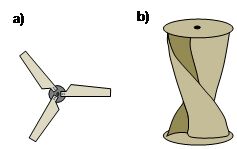
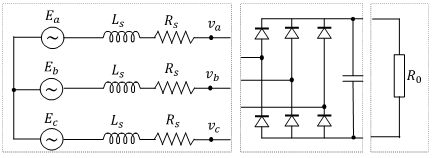
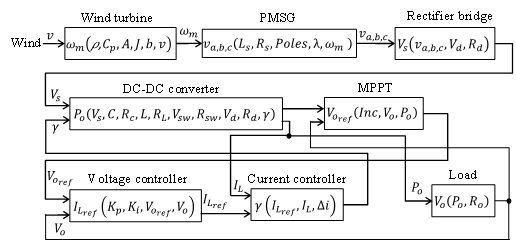
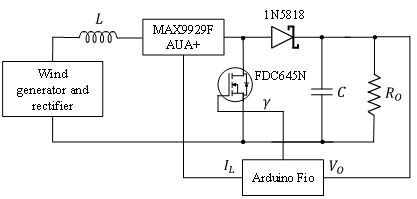
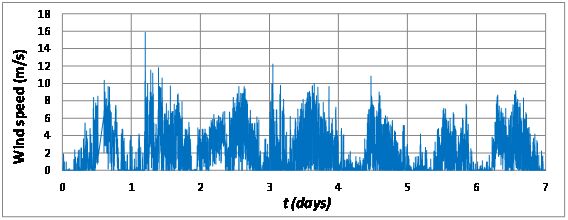


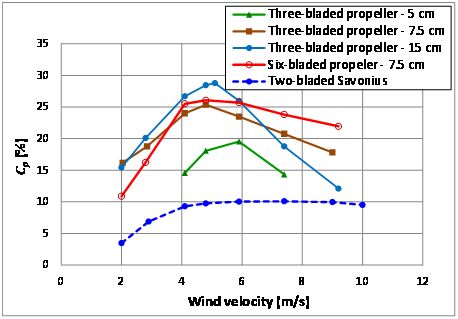
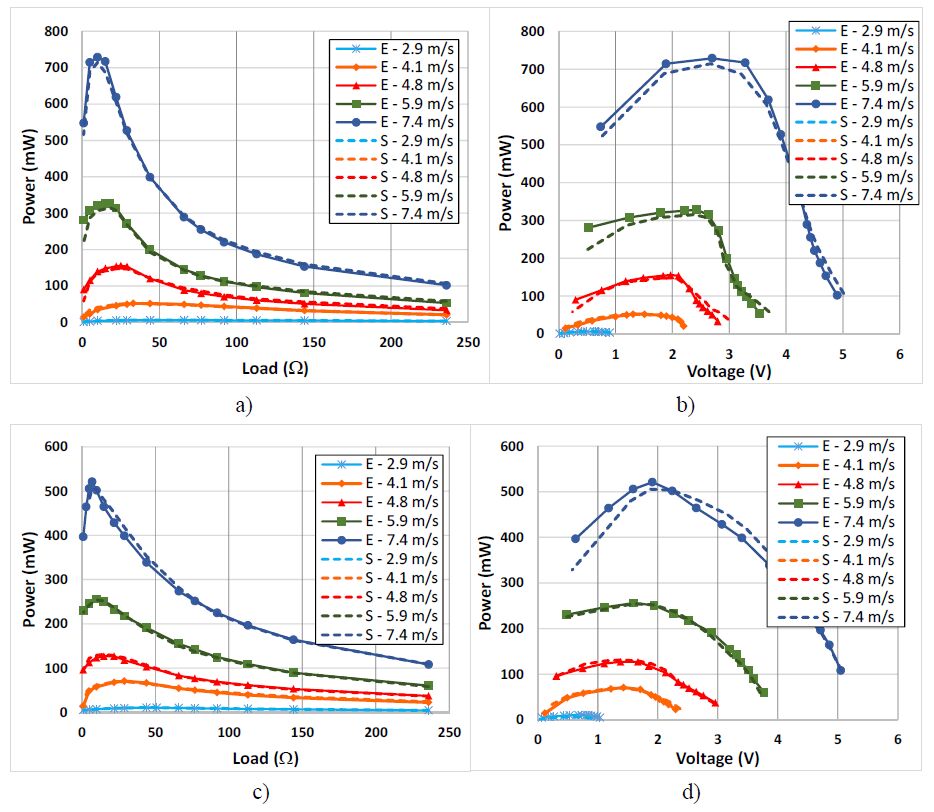
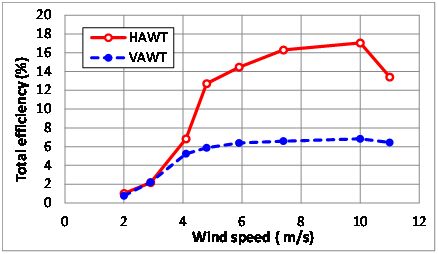
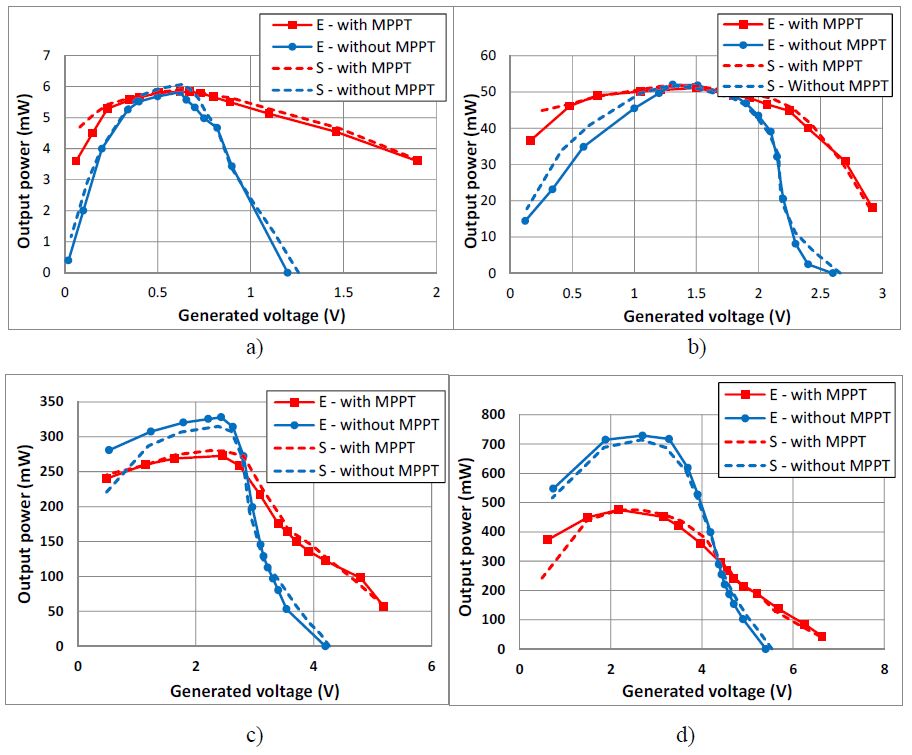

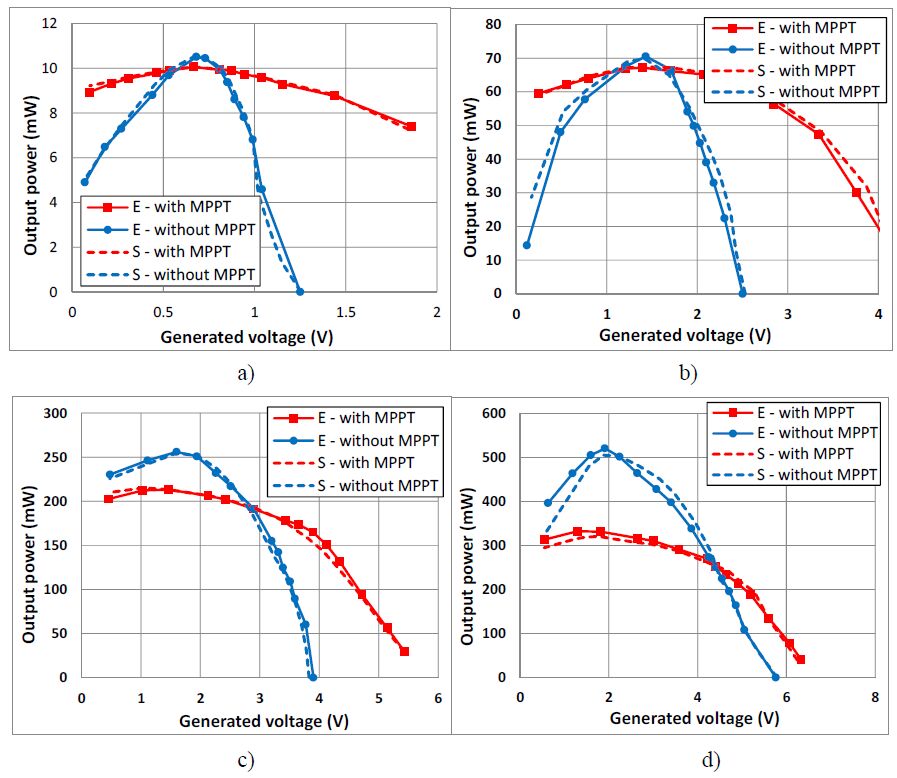
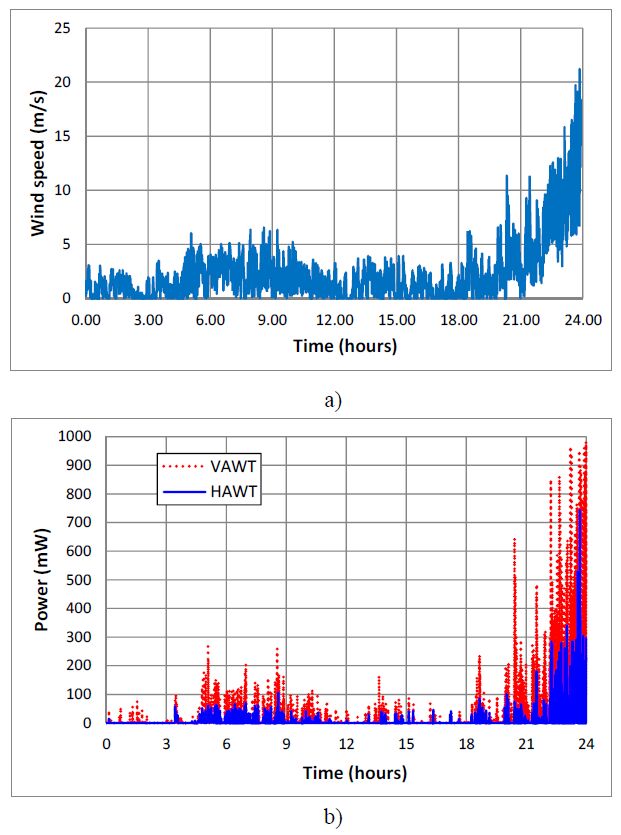


 DownLoad:
DownLoad: